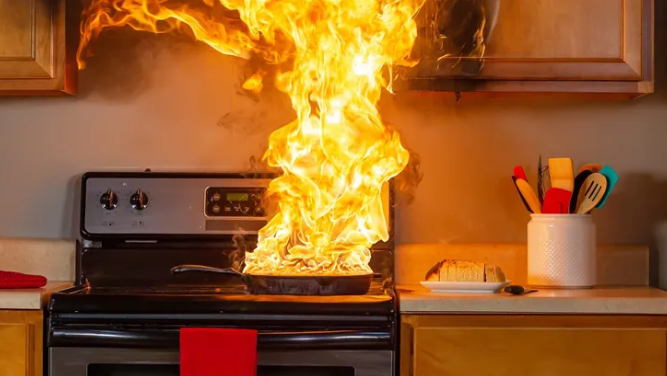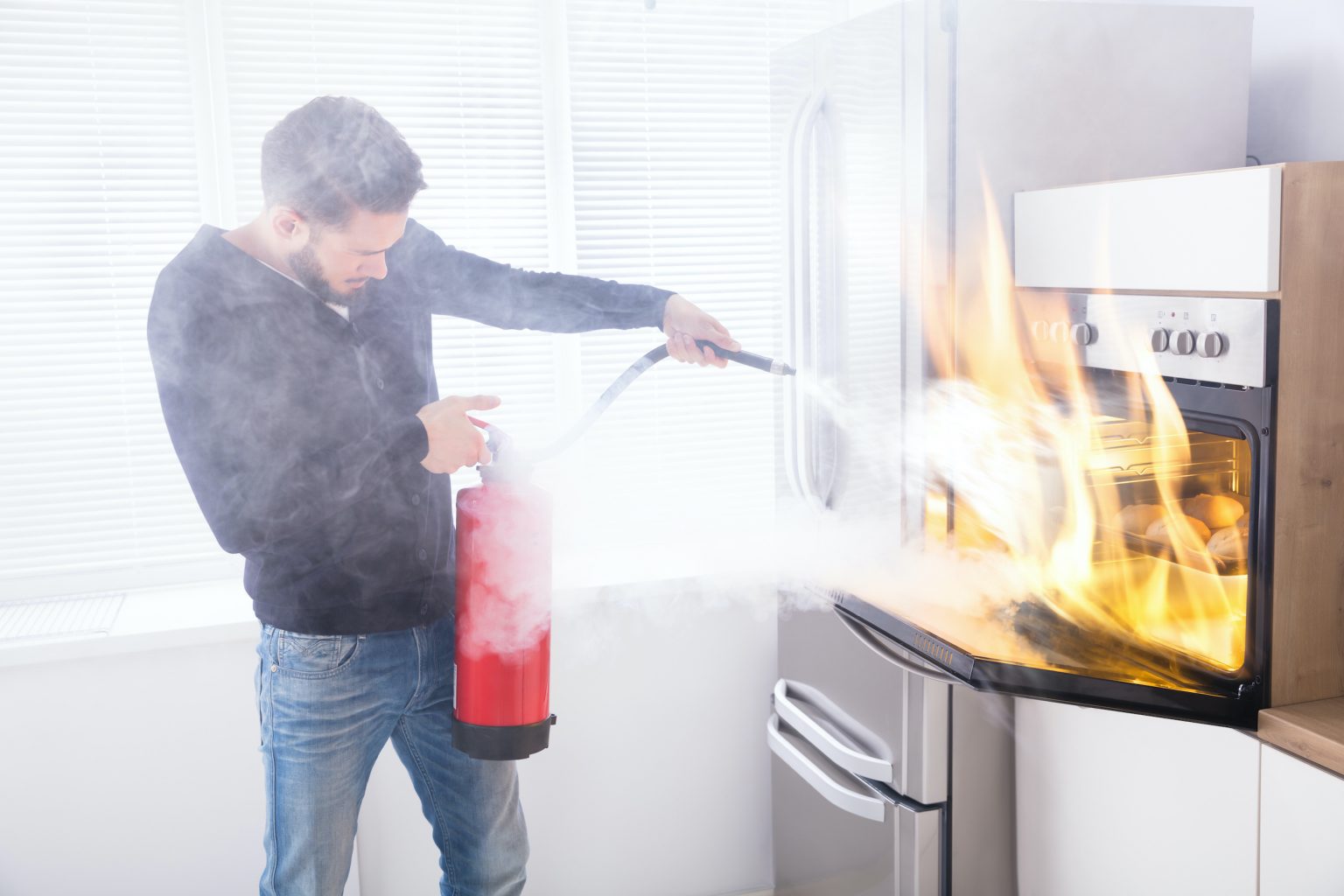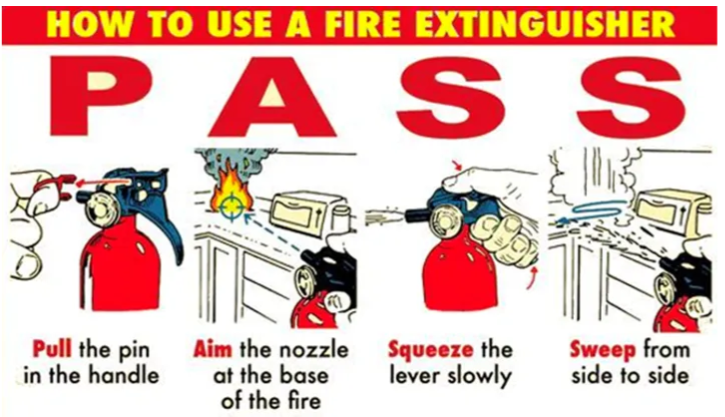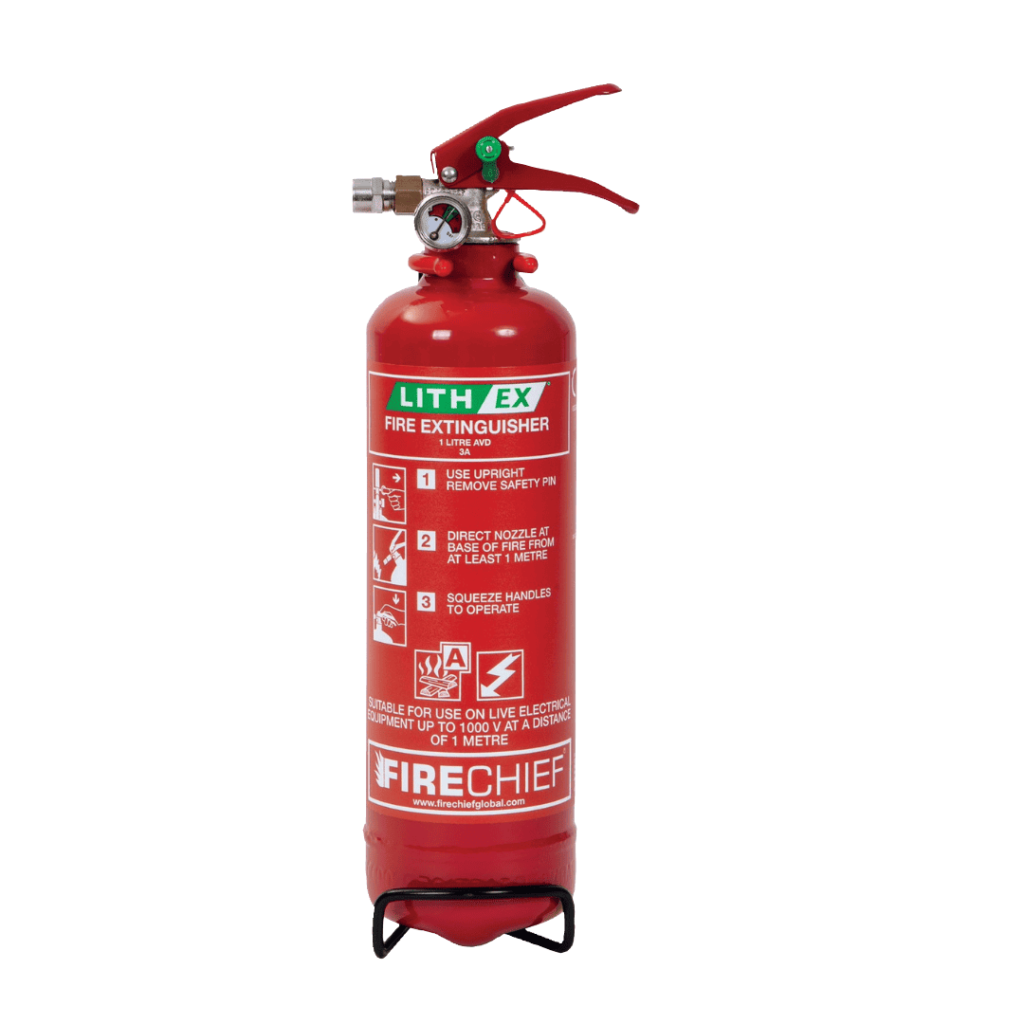As we delve further into the realm of kitchen fire safety, it’s important to recognize that the majority of home fires begin in the kitchen. Maintaining the joy and creativity of cooking while ensuring safety is crucial. Here are some essential tips to prevent cooking mishaps.
Stay Alert and Attentive: One of the fundamental rules in kitchen safety is never leaving cooking unattended, especially when frying, grilling, or broiling. Distractions can be dangerous, so it’s essential to avoid cooking when sleepy, under the influence of alcohol, or while multitasking. An unwatched pot or pan is often where trouble starts.
Keep Your Cooking Area Clean and Organized: A clean kitchen is a safe kitchen. Regularly cleaning cooking surfaces to prevent grease buildup is vital. It’s equally important to keep the stove and countertop area free of clutter, such as potholders, utensils, and food packaging, to reduce the risk of them catching fire.
Control the Heat and Dress for Safety: Managing the flame and heat settings is key to preventing fires. If you notice smoke or if the grease begins to boil, it’s time to turn the burner off. Moreover, what you wear while cooking matters. Opt for short, close-fitting, or tightly rolled sleeves. Loose clothing can easily dangle onto stove burners and catch fire, turning a minor incident into a major emergency.
Be Prepared for Emergencies: Having a fire extinguisher within reach in the kitchen is a wise precaution. But it’s not just about having it; knowing how to use it is crucial. Additionally, in the event of a grease fire, knowing how to smother it with a lid and turning off the stove can be a lifesaver.
Appliance Maintenance and Smoke Alarms: Keeping your cooking appliances in good condition is a significant aspect of kitchen safety. This includes regular checks and proper installation. Smoke alarms are also essential in the kitchen vicinity. They should be tested monthly and maintained properly to ensure they function in case of an emergency.
Create and Practice an Escape Plan: Lastly, having an escape plan and practicing it with your family ensures that everyone knows what to do in case of a fire. This preparation can make a critical difference in ensuring everyone’s safety.

Understanding Kitchen Fire Risks
The kitchen, a hub of culinary creativity and family gatherings, also harbors potential fire hazards. It’s crucial to understand common causes of kitchen fires and identify potential dangers within your cooking space to navigate this area safely.
Common Causes of Kitchen Fires:
-
Unattended Cooking: The leading cause of kitchen fires is unattended cooking. A pot left on the stove or an item in the oven can quickly escalate from a simmer to a blaze if left unmonitored.
-
Grease and Oil Fires: Oils and fats, common in cooking, can become highly flammable when overheated. This can lead to dangerous grease fires that are challenging to extinguish.
-
Electrical Malfunctions: Kitchen appliances need regular maintenance to prevent electrical fire risks. Faulty wiring or damaged cords can quickly spark a fire.
-
Flammable Materials: Everyday items like paper towels, dishcloths, or curtains can ignite if they come too close to open flames or hot surfaces.
Identifying Fire Hazards in the Kitchen:
-
Stove and Oven: Regularly inspect your cooking range to ensure it’s clean and free of grease buildup, and check that burners are functioning correctly.
-
Appliance Cords: Check cords for wear or damage. Frayed cords are a significant fire risk.
-
Flammable Material Storage: Store flammable items like paper towels and wooden utensils away from heat sources to prevent accidental ignition.
-
Smoke Alarms: Ensure smoke alarms are functional and have fresh batteries. These devices are crucial for early fire detection.
Fire Prevention Measures:
Safe Cooking Practices:
-
Attentiveness: Never leave your cooking unattended, especially when using high heat.
-
Grease Management: Be cautious with cooking oils and fats. In case of a grease fire, use a fire blanket or fire extinguisher, not water.
-
Flammable Material Storage: Keep your kitchen clutter-free and store flammable items away from heat sources.
Proper Use of Cooking Appliances:
-
Read and Understand Manuals: Familiarize yourself with the safety instructions of your appliances.
-
Regular Maintenance: Keep appliances in good condition and replace damaged cords.
-
Unplug After Use: To reduce the risk of electrical fires, unplug appliances when they’re not in use.
Fire-Resistant Kitchen Materials:
-
Choose Wisely: Opt for materials like stainless steel, granite, or ceramic tiles, which are less likely to catch fire.
-
Invest in Safe Utensils: Use utensils made from materials like metal or silicone, which are less prone to catching fire.

Equipping Your Kitchen for Fire Safety
Ensuring your kitchen is well-equipped for fire safety is crucial in protecting your home and loved ones. A fire-safe kitchen revolves around three essential components:
Fire Extinguishers in the Kitchen:
- Fire Class Compatibility: Choose a “Class K” fire extinguisher, designed for kitchen fires involving cooking oils and fats.
- Accessible Placement: Position the extinguisher in an easily accessible spot, ideally mounted on a wall or in a cabinet, but not too close to the stove.
- Regular Maintenance: Regularly check the pressure gauge and familiarize yourself with its operation, ensuring readiness for use.
Smoke Alarms and Their Placement:
- Strategic Placement: Install smoke alarms in your home, including near the kitchen, but at least 10 feet away from cooking appliances to minimize false alarms.
- Test Regularly: Conduct monthly tests and yearly battery replacements. Smoke alarms should be replaced every ten years.
- Interconnected Alarms: For heightened safety, consider interconnected smoke alarms that activate simultaneously, providing early and widespread warning.
Fire Blankets: A Kitchen Essential:
- Versatile Fire Suppression: Ideal for smothering small fires, especially in pots and pans.
- Easy Storage: Keep the fire blanket in an accessible spot and ensure everyone knows its location and usage.
- Simple Deployment: In case of a fire, quickly cover the flames entirely with the blanket and leave it until the fire is extinguished.
Emergency Response and Evacuation:
Creating a Kitchen Fire Escape Plan:
- Plan Ahead: Develop a fire escape plan with two exits from the kitchen, ensuring safe egress.
- Practice Regularly: Conduct fire drills for familiarity with the escape plan, practicing crawling low to avoid smoke.
- Designate a Meeting Point: Choose an outside meeting point to gather after evacuation, ensuring everyone is accounted for.
Immediate Actions in Case of a Kitchen Fire:
- Stay Calm: Keeping calm is vital for effective decision-making during a fire.
- Turn Off the Heat: If possible, eliminate the heat source by turning off the stove or oven.
- Use a Fire Blanket: For small fires, a fire blanket can effectively smother the flames.
Evacuation Procedures and Meeting Points:
- Prioritize Evacuation: In escalating fires, focus on evacuation. Close the kitchen door behind you to contain the fire and follow your escape plan.
- Gather at the Meeting Point: Reunite at the predetermined outdoor meeting spot.
- Call Emergency Services: Once safe, immediately contact emergency services, providing your address and details of the fire.

Safety Tips for Cooking with Kids
Involving kids in the kitchen can be a fun and educational experience, but it’s essential to prioritize their safety. Here are some valuable tips to ensure a safe cooking environment for children:
Childproofing the Kitchen:
- Secure Cabinets and Drawers: Use childproof latches to keep dangerous items like knives, cleaning supplies, and heavy pots out of reach.
- Lock Away Hazardous Materials: Store toxic substances like cleaning agents in locked cabinets or high shelves.
- Stove and Oven Safety: Install stove knob covers and create a safety zone to keep kids at a safe distance while cooking.
Teaching Kids Fire Safety:
- Educate on Fire Hazards: Discuss the dangers of open flames and hot surfaces with your children.
- Practice Stop, Drop, and Roll: Teach the stop, drop, and roll technique for clothing fires.
- Fire Safety Drills: Conduct drills emphasizing quick and calm evacuation from the kitchen and home.
Supervision and Cooking with Children:
- Always Supervise: Keep a constant watch on children in the kitchen, especially when cooking.
- Assign Age-Appropriate Tasks: Involve children in safe cooking tasks and use child-friendly utensils.
- Educational Experience: Teach children about food safety, hygiene, and healthy eating.
Kitchen Fire Safety Checklist
A thorough kitchen fire safety checklist is essential for preventing potential hazards:
A Comprehensive Guide to Kitchen Fire Safety:
- Appliance Safety: Inspect kitchen appliances regularly for wear and tear.
- Smoke Alarms: Test monthly, change batteries yearly, and replace every ten years.
- Fire Extinguisher: Keep a Class K fire extinguisher accessible, and know how to use it.
- Fire Blanket: Store in an accessible location and train household members on its use.
- Safe Cooking Practices: Turn pot handles away and practice safe cooking habits.
- Cleanliness: Keep the kitchen clean and free of grease buildup.
- Kitchen Evacuation Plan: Develop and familiarize your family with a specific evacuation plan.
- Supervision: Never leave cooking unattended, especially when frying.
- Emergency Contact: Post emergency numbers visibly in the kitchen.
- First Aid Kit: Keep a well-stocked first aid kit for minor burns and injuries.
- Children and Pets: Use barriers to keep children and pets away from hot surfaces.
- Emergency Response: Educate household members on responding to kitchen fires.
In conclusion, creating a safe kitchen environment, especially when cooking with kids, is vital. By implementing these safety measures and maintaining a well-prepared kitchen, you can ensure a secure cooking space. These practices are not just precautions but necessary steps for the well-being of everyone in your home. Remember, safety in the kitchen is a continuous effort, and a little vigilance can lead to a more enjoyable and worry-free culinary experience for the whole family.

